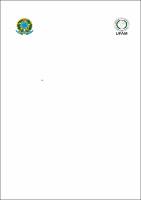| ???jsp.display-item.social.title??? |


|
Please use this identifier to cite or link to this item:
https://tede.ufam.edu.br/handle/tede/10784| ???metadata.dc.type???: | Tese |
| Title: | UXIE: User eXperience for Immersive Experience Context - Um Framework para avaliação de UX |
| ???metadata.dc.creator???: | Marques, Leonardo Carneiro  |
| ???metadata.dc.contributor.advisor1???: | Conte, Tayana Uchôa |
| First advisor-co: | Gadelha, Bruno Freitas |
| ???metadata.dc.contributor.referee1???: | Prates, Raquel Oliveira |
| ???metadata.dc.contributor.referee2???: | Pereira, Roberto |
| ???metadata.dc.contributor.referee3???: | Marques, Anna Beatriz dos Santos |
| ???metadata.dc.contributor.referee4???: | Lima, Márcia Sampaio |
| ???metadata.dc.description.resumo???: | A rápida evolução da tecnologia trouxe novas oportunidades para o desenvolvimento de novos aplicativos e para a interação com eles, tais como as tecnologias imersivas, onde as fronteiras entre os mundos físico, virtual e simulados são atenuadas. Cada vez mais, nota-se a presença de aplicações voltadas para o entretenimento e interação em contextos não convencionais. Por exemplo, a maneira de experienciar museus reais tem mudado radicalmente nos últimos vinte anos devido às instalações virtuais. Além disso, no contexto de eventos voltados para o entretenimento de multidões (shows, futebol, etc.), as aplicações imersivas têm o objetivo de tornar o público, muitas vezes um expectador passivo, em um participante ativo do evento através da tecnologia. Nestas aplicações, a interação tradicional usuário-aplicativo é diferente. Ao invés de interagir exclusivamente com a aplicação, o usuário a utiliza como uma maneira de intermediar sua experiência de imersão. Os principais desafios inerentes a este cenário envolvem investigações sobre como avaliar a UX da interação através dessas aplicações. As particularidades deste contexto, tais como a grande quantidade de pessoas, o engajamento do usuário com a experiência vivida não ser interrompido, tornam a avaliação de UX um desafio. Motivado pelo contexto acima e pela necessidade de entender a qualidade das experiências imersivas, este trabalho é guiado pela seguinte questão de pesquisa (QP): Como avaliar a UX em contextos de experiências imersivas voltadas ao entretenimento? Para responder esta questão, foram elaborados diferentes componentes de avaliação de UX que compõem o principal resultado desta pesquisa de doutorado, o framework UXIE. O framework é formado por dois componentes: Questionnaire-Based (UXIE-QB), voltado para experiências imersivas que envolvem uma quantidade menor de pessoas, e o Log-Based (UXIE-LB), que se aplica ao contexto de experiências imersivas de multidão, onde não é possível ter pessoas com disponibilidade para responder um questionário de avaliação. Para tanto, esta pesquisa foi baseada metodologicamente na Design Science Research (DSR), criada para desenvolver artefatos através de três ciclos bem definidos que garantem a novidade, a relevância e o rigor da pesquisa. Como resultados, os componentes foram avaliados através de estudos experimentais que mostraram a viabilidade dos mesmos, permitindo entender e avaliar a experiência do usuário em contextos de imersão. |
| Abstract: | The rapid evolution of technology has brought new opportunities for developing new applications and interacting with them, such as immersive technologies, where the boundaries between the physical, virtual, and simulated worlds are blurred. Increasingly, there is the presence of applications aimed at entertainment and interaction in unconventional contexts. For example, the way of experiencing real museums has changed radically over the last twenty years due to virtual installations. Furthermore, in the context of events aimed at entertaining crowds (concerts, football, etc.), immersive applications aim to turn the audience, often a passive spectator, into an active participant in the event through technology. In these applications, the traditional user-application interaction is different. Instead of interacting exclusively with the application, the user uses it to mediate their immersive experience. The main challenges inherent in this scenario involve investigations on evaluating the interaction UX through these applications. The particularities of this context, such as many people, the user engagement with the lived experience not being interrupted, make the UX evaluation a challenge. Motivated by the above context and the need to understand the quality of immersive experiences, we guide this work by the following research question (RQ): How to evaluate UX in contexts of immersive entertainment-oriented experiences? We developed different UX evaluation components to answer this question that makes up the main result of this doctoral research, the framework UXIE. The framework consists of two components: Questionnaire-Based (UXIE-QB), aimed at immersive experiences that involve a smaller amount of people, and Log-Based (UXIE-LB), which applies to the context of immersive crowd experiences, where it is not possible to have people available to answer an evaluation questionnaire. Therefore, this research was methodologically based on Design Science Research (DSR), created to develop artifacts through three well-defined cycles that guarantee the novelty, relevance, and rigor of the research. As results, we evaluated the components through experimental studies that showed their viability, allowing us to understand and evaluate the user experience in immersion contexts. |
| Keywords: | Aplicações Web Projeto de sistema centrado no usuário Interação humano-máquina |
| ???metadata.dc.subject.cnpq???: | CIENCIAS EXATAS E DA TERRA |
| ???metadata.dc.subject.user???: | UX Experiência do usuário Experiência imersiva Avaliação de UX |
| Language: | por |
| ???metadata.dc.publisher.country???: | Brasil |
| Publisher: | Universidade Federal do Amazonas |
| ???metadata.dc.publisher.initials???: | UFAM |
| ???metadata.dc.publisher.department???: | Instituto de Computação |
| ???metadata.dc.publisher.program???: | Programa de Pós-graduação em Informática |
| Citation: | MARQUES, Leonardo Carneiro. UXIE: User eXperience for Immersive Experience Context - Um Framework para avaliação de UX. 2024. 177 f. Tese (Doutorado em Informática) - Universidade Federal do Amazonas, Manaus (AM), 2024. |
| ???metadata.dc.rights???: | Acesso Aberto |
| ???metadata.dc.rights.uri???: | https://creativecommons.org/licenses/by-nc-nd/4.0/ |
| URI: | https://tede.ufam.edu.br/handle/tede/10784 |
| Issue Date: | 23-Apr-2024 |
| Appears in Collections: | Doutorado em Informática |
Files in This Item:
| File | Description | Size | Format | |
|---|---|---|---|---|
| TESE_LeonardoMarques_PPGI.pdf | 4.62 MB | Adobe PDF |  Download/Open Preview |
Items in DSpace are protected by copyright, with all rights reserved, unless otherwise indicated.




